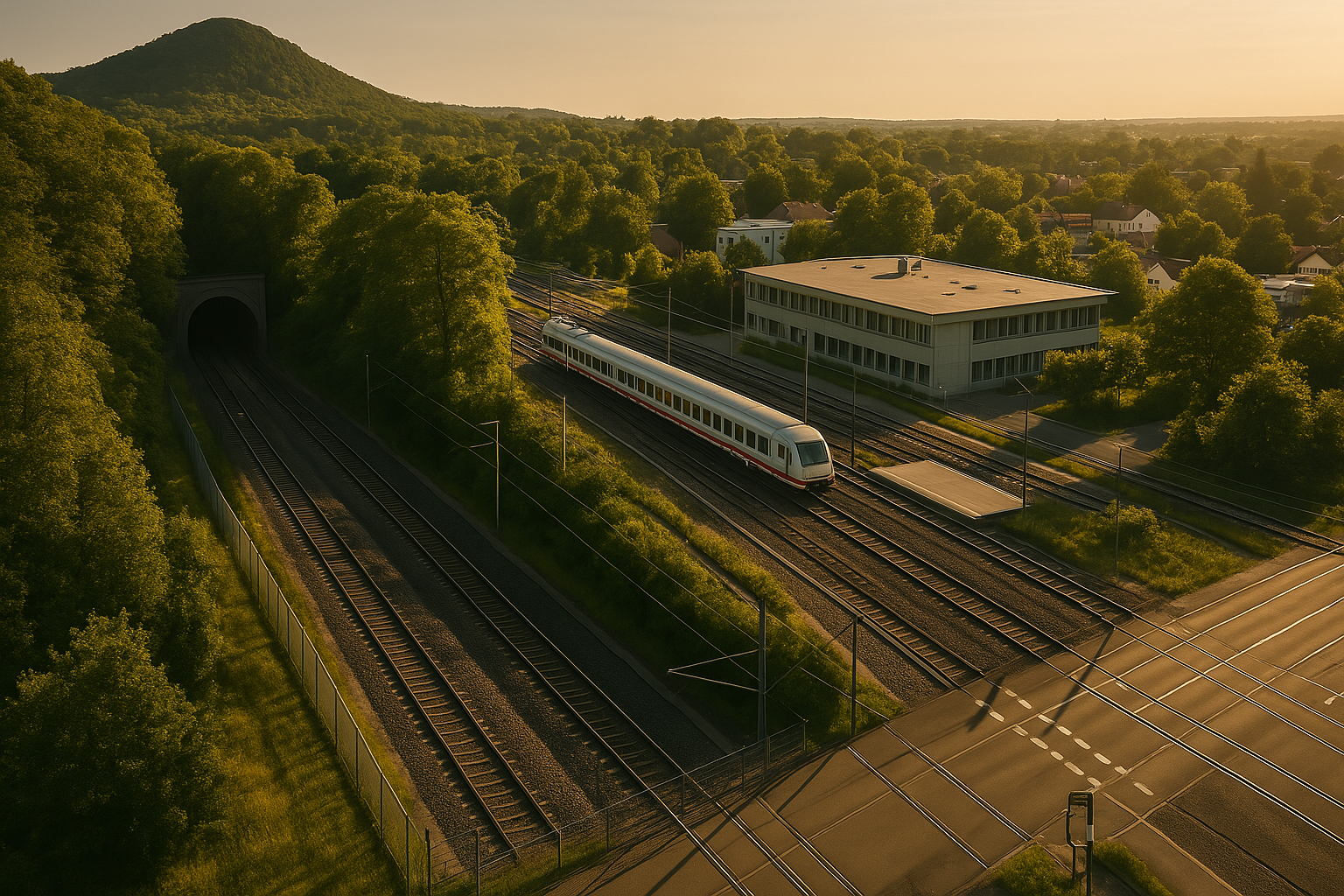Tunnel and Rail Security
Rail, underground, and tunnel systems play a crucial role in transportation and are essential to the functioning of modern cities. However, these systems face unique security challenges due to their openness, high passenger volume, and potential as targets for sabotage or terrorism.


OPTEX REDSCAN LiDAR provides precise and reliable perimeter protection for railway depots, ensuring comprehensive security for valuable assets and infrastructure. Using advanced laser technology, REDSCAN creates virtual detection zones that accurately identify intrusions while minimising false alarms caused by environmental factors. It monitors large areas, including fences, gates, and open spaces, and seamlessly integrates with existing security systems like CCTV and alarms. When a breach is detected, the system triggers real-time alerts and camera focus for instant threat verification, enabling rapid response to unauthorised access or vandalism.
Designed to perform in all weather conditions, REDSCAN operates reliably in rain, fog, or low light, ensuring 24/7 protection for railway depots. Its customisable detection zones allow operators to prioritise high-risk areas such as maintenance bays or fuel storage, while providing full perimeter coverage. By combining precision, scalability, and seamless integration, OPTEX REDSCAN LiDAR enhances depot security and reduces operational disruptions, making it a trusted choice for railway infrastructure protection.
Tunnel Security
Tunnels on train tracks, whether for railways or subways, present unique safety challenges. These dark, enclosed, and humid environments pose significant risks, particularly when individuals trespass. Inside a tunnel, pedestrians are in confined spaces with limited visibility and virtually no escape routes, drastically increasing the likelihood of a train-pedestrian collision.
Detecting individuals in such challenging conditions is no small feat. The lack of natural light, combined with high humidity, can impair traditional detection systems. However, innovative laser sensor technology is revolutionizing tunnel safety, offering reliable performance regardless of lighting or environmental conditions.
Intelligent Laser Sensor Technology for Tunnel Safety
Modern detection systems, such as the REDSCAN Pro, are designed to address the complexities of tunnel environments. Unlike conventional sensors, these advanced systems are:
- Unaffected by humidity or low-light conditions – ensuring consistent detection in dark, enclosed spaces.
- Equipped with intelligent sensing analytics – capable of auto-learning environmental changes to adapt seamlessly and maintain reliability.
- Self-monitoring – alerting operators when sensor functionality is compromised, such as by a soiled lens.
Dynamic Event Filtering and Precision Detection
The REDSCAN Pro employs dynamic event filtering, enabling accurate differentiation between objects like pedestrians and trains. This innovative system utilizes a two-zone detection method:
- First Zone detects objects entering the tunnel at pedestrian height.
- Second Zone monitors for objects at greater heights, such as trains.
- When an object is detected in the first zone, the system primes itself for a second reading within milliseconds. If the object is detected in the second zone shortly after, it recognizes it as a train and stands down. This dual-zone filtering prevents false alarms while ensuring immediate alerts for genuine risks.
Why Advanced Sensors Are Critical for Tunnel Safety
Implementing intelligent detection systems at tunnel entrances helps:
- Prevent unauthorised access.
- Mitigate the risk of collisions between trains and pedestrians.
- Enhance overall operational safety and efficiency.
With their ability to operate effectively in the most challenging environments, technologies like REDSCAN Pro are transforming safety measures for railways and subways, reducing risks and ensuring smoother operations.
Tunnels on train tracks are inherently dangerous, but with advanced intelligent detection sensors, rail operators can significantly reduce accidents and improve safety. Systems like REDSCAN Pro represent a critical leap forward, providing precise, reliable, and adaptive detection in even the most demanding conditions.
Rock Fall
Delays caused by hazardous obstacles on train tracks are a significant challenge for rail operators, especially in remote areas. Traditional detection methods often require time-consuming inspections, delaying trains at signals and disrupting the flow of shipments. These delays not only affect the obstructed train but also impact subsequent trains, leading to increased operational costs.
The Rockfall LiDAR system offers a cutting-edge solution, combining precise obstacle detection with optimised train throughput. By leveraging advanced LiDAR technology, this system detects obstacles on the tracks and assesses the urgency required to dispatch an engineer, minimising disruptions.
Level Crossings
Level-crossing barriers, while essential for safety, can sometimes pose challenges for certain users. Pedestrians and cyclists, particularly those with pushchairs or bicycles, may find it difficult to navigate through these spaces. Others appear inattentive, ignoring barriers or becoming distracted by mobile phones or photography.
Collisions at level crossings pose severe risks not only to individuals but also to train operations. A train striking a vehicle or other obstacles on the tracks can cause major delays, disruptions, and significant costs for rail operators.
New technologies, such as OPTEX’s LiDAR sensors, are proving to be game changers in improving level crossing safety for users and operators alike. These sensors offer advanced detection capabilities, identifying individuals or objects trapped between barriers and even detecting children playing on the tracks.
When a level crossing is active, LiDAR sensors are signaled, and the laser sensor scans the crossing area. If the crossing is clear, the signal turns green, allowing the train to pass safely. If an obstacle is detected, the barriers are raised to let the individual or vehicle exit before the train proceeds. In situations where vehicles stall or people remain stranded, the train driver is warned, and the train can be automatically stopped until the obstruction is cleared.
Network Rail has already installed OPTEX’s REDSCAN LiDAR technology at over 400 level crossings across the UK, from Scotland to the South Coast, enhancing safety for all users and minimizing risks.







